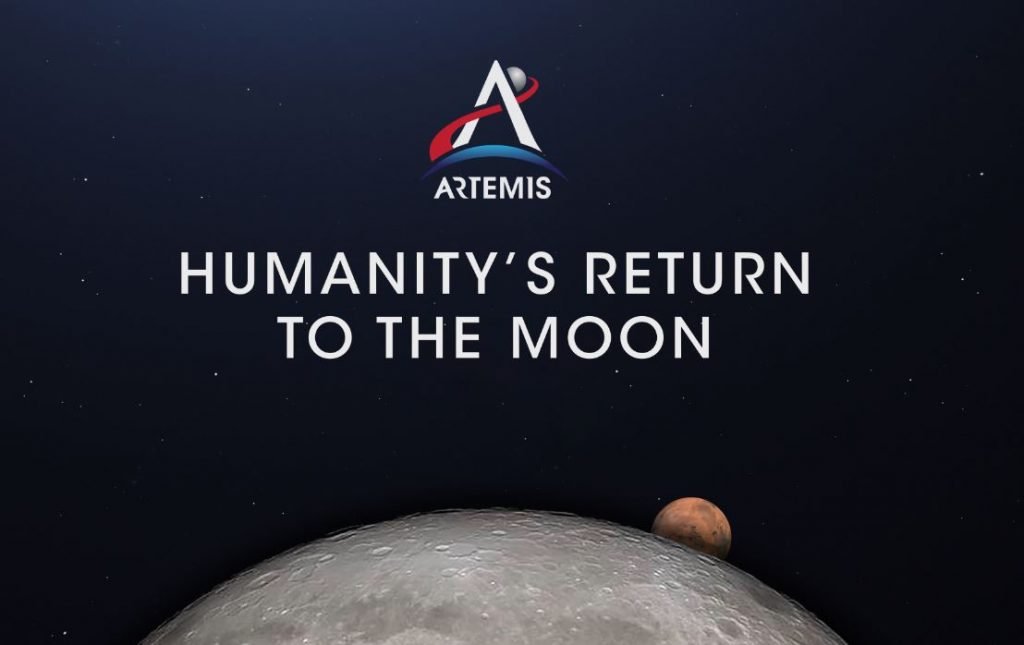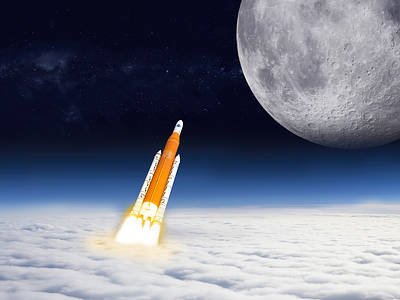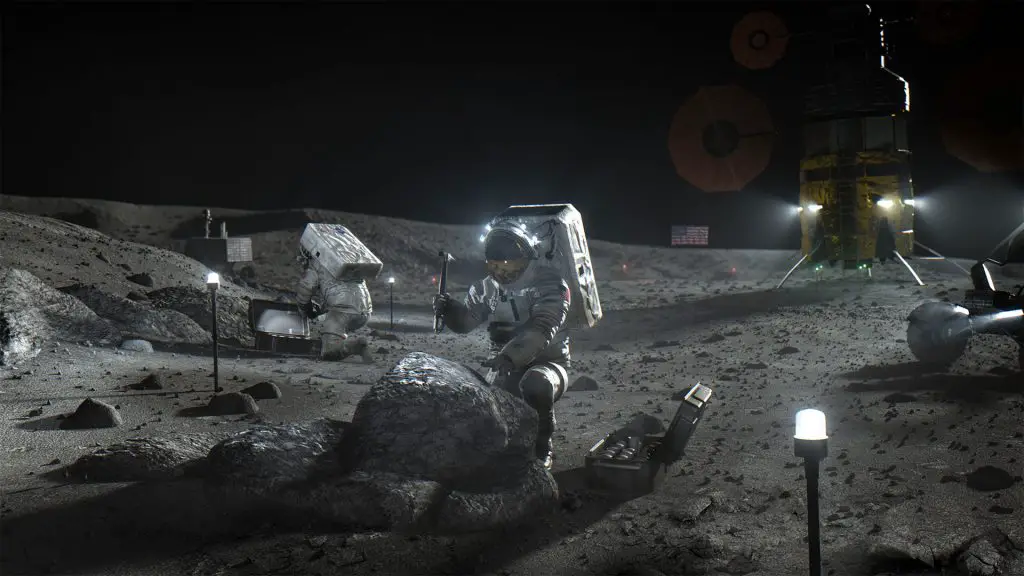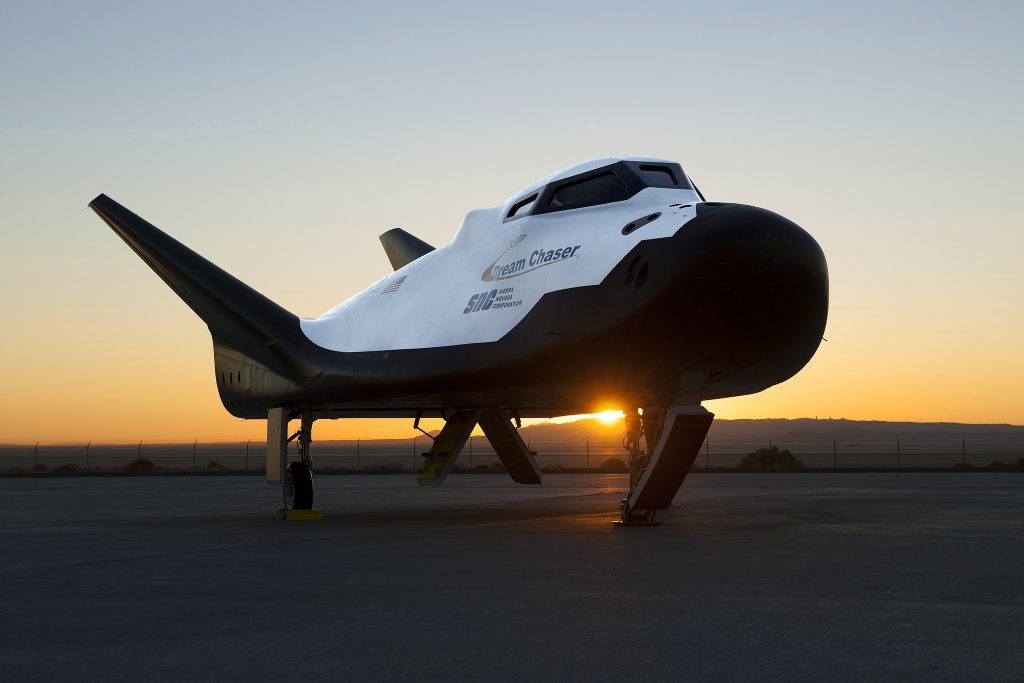Any links on this page that lead to products on Amazon and other companies may be affiliate links and we earn a commission if you make a qualifying purchase. Thanks in advance for your support!
The recent confirmation by NASA that there is definitely useable water in lunar soil is good news for the European Space Agency (ESA) and NASA itself. A “Moon Village” at the lunar south pole has been an ambition of both space agencies in recent years and local water is a firm requirement to make the Moon Base sustainable. But what else will be required to build a moon base using local resources? Read on below…
- What are the Project Artemis Plans?
- Is ISRU Viable for the Artemis Moon Base?
- But Are the Resources Definitely Available?
- Establishing ISRU Viability
- What Plans Do the World’s Space Agencies Have to Research ISRU?
- How Could Humans Build Bases on the Surface of the Moon and Mars?
- A Base on the Moon? – Construction Materials
- Locally Sourced Food
- Who Owns the Moon, Asteroids and the Planets?
- The Future of ISRU – an Exporting Colony on the Moon?
As a precursor to establishing an outpost on Mars one day, the lunar base will most likely need to make use of local sources of water for air, drinking water and irrigating soil for food.
Also, the base will be using sunlight for power supplies via solar panels and this energy could be applied to process the water to split molecules down for the manufacture of hydrogen and oxygen for rocket fuel, all effectively mined from the lunar surface.
Scientists believe that living off the land via what is now termed “In Situ Resource Utilisation” (ISRU) is a key to future space exploration and, one-day, for the colonisation of the Solar System.
What are the Project Artemis Plans?
Half a century after the 1969-1972 Apollo programme landings on the Moon, the emerging NASA-led Project Artemis seeks to land the first woman and the next man on the surface of the Moon by 2024, recommencing the human lunar exploration that was halted when the Apollo programme was cancelled and the last astronauts left the lunar surface following the Apollo 17 mission in 1972.

The planned Artemis 3 mission of 2024 will make use of an Orion 4-crew spacecraft , plus a new lunar lander vehicle, all launched via the emerging “Space Launch System (SLS )” vehicle this is a huge rocket that is even more powerful than the Saturn 5 of the Apollo years. The mission will involve a landing either at the lunar south pole, or possibly at a more accessible equatorial site such as the Aristarchus crater that was intended as a target for the cancelled Apollo 18 mission.

A lunar Gateway space-station is being developed to orbit the Moon, provide for a transfer and refuelling stop for lunar missions, plus offer a safe-haven for the Orion spacecraft itself, plus possible future Russian or Chinese spacecraft that may one-day visit this cislunar location.
The subsequent Artemis lander missions following Artemis 3 will allow for the eventual establishment of a reusable base, intended for the lunar South Pole where shadowed craters should contain useable water in the soil, particularly around the Shackleton Crater in the Aitken Basin region.
Is ISRU Viable for the Artemis Moon Base?
The “Artemis Accord”, recently joined by the UK and the precursor international agreement to establish an Artemis Moon base, provides for protocols for lunar exploration, plus exploitation of its resources, including soil-bearing water. It is important that in the early years of renewed human lunar missions, agreed international procedures are followed, covering the use of its natural resources and ownership of lunar material.
Under the 1967 UN Outer Space Treaty of course, nations cannot claim ownership rights of planets and asteroids in the Solar System, but the new Artemis Accord will allow use of local resources on the Moon.
So, it was back in 2017 that President Trump announced in his “Space Directive 1” the intention of a US return to the Moon, before going on to Mars. In support of this, NASA’s “Next STEP-2” and ESA’s new initiatives are taking “ISRU” possibilities seriously.
Dr. Katherine Joy from the University of Manchester is working on lunar research and she believes that there is a growing need to understand the budgets of different resources on the Moon, asteroids and Mars, and to develop technology to extract those resources in an efficient manner.
But Are the Resources Definitely Available?
In March 2010, the lunar probe Chandrayaan-1 discovered at least 40 shadowed craters at the lunar north pole containing an estimated 600 million tonnes ice.
However, the NASA announcement in October 2020 also refers to the “unambiguous detection of molecular water” in sunlit regions of the Moon – this was established via the Sofia airborne observatory operated by NASA. Two papers in the science journal “Nature” refer to at least 12 ozs. of water being locked up in a cubic metre of lunar soil.
Apart from normal sunlit lunar soil areas, “Cold traps” also exists across the Moon. These shadowed areas extend to 40k sq km at the poles and could provide even more water ice that is useable for the Moon base.
Establishing ISRU Viability
Water on the Moon is important for the future of the exploration of the Solar System.
Rocket launches are expensive at present. A launch to Low Earth Orbit (LEO) via the Atlas V booster for example costs $20,000/kg. Space X’s Falcon Heavy rocket will eventually achieve $1,700/kg to LEO, but onward flights will be more costly.
To cut this cost and launch rockets from the Moon or Mars, it seems clear that locally sourced methane and oxygen fuel on Mars and water for hydrogen and oxygen from lunar mining on the Moon is required. Space X’s planned future Starship spacecraft for example will need local fuel supplies to establish itself as a viable deep-space vehicle.
What Plans Do the World’s Space Agencies Have to Research ISRU?
Two forthcoming robotic space missions, Russia/ESA’s Luna 27 lander and NASA’s Mars 2020 Perseverance rover, will soon be testing emerging ISRU possibilities.
The Russian/European Luna 27 lander will focus on the possibility of lunar ice at the Aitken Basin. ESA will contribute the “PROSPECT” drill system to penetrate 2m down.
The Perseverance rover launched to Mars in 2020 includes the MOXIE experiment – this is a test unit designed to create breathable oxygen from the Martian CO2 atmosphere and possibly oxidiser fuel too.
For the future, the “Sabatier process” will applied for the extraction of oxygen and rocket fuel for Martian bases and return flight fuel production. This system involves the reaction of hydrogen with CO2 at 200-400 degrees C. Methane fuel can then be created for supply spaceships, together with water and oxygen.
Available CO2 on Mars is very rarefied, with the atmospheric pressure being 100th of the Earth’s. However, extensive solar PV or nuclear generators could be employed on Mars to make the Sabatier system work.
One approach to land humans on Mars that was formulated in the 1990’s was the “Mars Direct” mission, as proposed by Dr. Robert Zubrin and the “Mars Society” – the Sabatier system and ISRU was vital for this low-cost approach to establish a Mars-base.
On Mars, it seems clear that using ISRU to unlock and exploit frozen water is vital. Orbiting probes have shown that water locked up at the south polar cap is expected to be extensive – if melted, it could entirely cover the planet’s surface to a depth of 11 metres.
How Could Humans Build Bases on the Surface of the Moon and Mars?
Teleoperation from lunar or Mars orbit seems possible. UK astronaut Tim Peake tested this approach from Earth orbit on the ISS in 2015 during his Principia mission. Operating the “Bridget” test vehicle for the Exomars rover- soon to be called the Rosalind Franklin rover and launched in 2022 – at Stevenage in the UK, Tim showed that tele-robotics was possible from orbit .
A Base on the Moon? – Construction Materials
What about locally sourced construction material? Building on the Moon may require mixing regolith soil, effectively “lunar dust”, with a binding agent to establish a concrete-like hardened material for construction and building insulation may be possible. Also, an epoxy resin could be used to harden key structural load beams.
Local site investigation from lunar and Mars orbits has revealed caves and lava tubes for settlements. Inside these naturally protected locations, walls and beams constructed via enhanced 3D printing using pulverised regolith material may one day be possible.
Protection from harmful solar radiation for both lunar and Mars bases will be made more realistic in this way.
Locally Sourced Food
Many will have seen in the 2015 movie “The Martian”, where the abandoned astronaut used Mars soil to grow potato crops to survive .
This process was checked-out as being practically possible for the book by Andy Weir that was the source for the film. Many researchers believe that ISRU-led plant production is indeed viable. ”Macro-nutrients” like O2, carbon, hydrogen, nitrogen and potassium are present in lunar and Martian soil and could be employed for this approach .
At the Netherlands Wageningen University in 2014 , experiments established the viability of using local soil for both the Moon and Mars, with a greenhouse crop growth under domes at a base being possible, making use of PV powered energy and natural sunlight.
Who Owns the Moon, Asteroids and the Planets?
The United Nation’s 1967 Outer Space Treaty states that nations cannot acquire land on celestial bodies.
However, it is generally accepted that Moon and Mars bases that make use of ISRU approaches are unlikely to be prohibited by current international law. Indeed, the USA’s Space Act of 2015 attempted to encourage the commercial use of materials beyond the Earth. Belgium will soon permit companies planning exploitation of space to be registered from their nation.
One issue to solve may well be the need to carefully plan which areas of both the Moon and Mars can be used for soil exploitation and base construction.
“Conservation Areas” and “Interplanetary Parks” will need to be established one day via international agreement, to prevent the spoiling of “natural” scenic and geologically unique areas. On Mars and particularly for the icy Moons such as Europa and Enceladus, special controls will be required to protect areas where basic microbial life may possibly exist.
The Future of ISRU – an Exporting Colony on the Moon?

Future lunar and Martian bases and colonies will gradually become more extensive and research more sophisticated, so that ISRU will be increasingly vital for sustainable approaches and viability.
The history of local resource use by explorers and colonists across the Earth, particularly from the 16th century onwards, shows how ISRU as an approach is essential.
If colonisation on the Moon is established, one day in the future perhaps lunar and Martian explorers and entrepreneurs will follow Earth’s settler pioneer examples, establish their self-supporting colonies and even beginning to export their home-grown manufactured goods back to the Earth itself.





